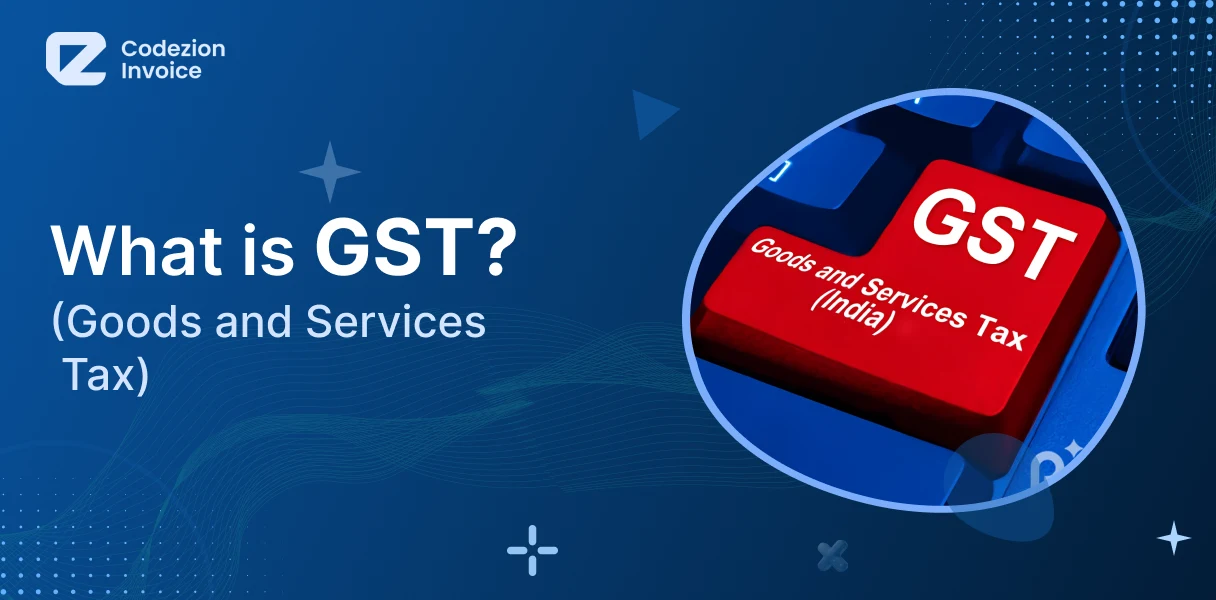
Goods and Services Tax (GST) is a comprehensive indirect tax levied on the manufacture, sale, and consumption of goods and services across India. Implemented on July 1, 2017, GST replaced a complicated structure of multiple indirect taxes levied by the central and state governments. It aims to unify India into a single, common market by introducing a single tax on supply, thereby eliminating the cascading effect of taxation.
Goods and Services Tax (GST) is a comprehensive indirect tax levied on the manufacture, sale, and consumption of goods and services across India. Implemented on July 1, 2017, GST replaced a complicated structure of multiple indirect taxes levied by the central and state governments. It aims to unify India into a single, common market by introducing a single tax on supply, thereby eliminating the cascading effect of taxation.
Before GST, India's tax system was a patchwork of central and state levies. The Centre imposed Central Excise Duty, Service Tax, and Additional Customs Duties, while the states levied VAT, Entry Tax, Purchase Tax, and Local Body Taxes like octroi. Businesses faced high compliance burdens and tax cascading due to multiple levies on the same supply chain.
The previous regime was plagued with inefficiencies. There were tax-on-tax issues, lack of transparency, and a fractured tax base. The aim of GST was to simplify the indirect tax landscape, eliminate hidden taxes, improve compliance, and unify the national market under a single tax framework.
For an intra-state supply, both CGST and SGST are applied. For inter-state supply, IGST is levied, which is later shared between the Centre and destination state.
The Composition Scheme is designed for small taxpayers with a turnover up to ₹1.5 crore (₹75 lakh for some NE states). These taxpayers pay a nominal tax rate and file quarterly returns. However, they cannot avail input tax credit or engage in inter-state trade.
Supply: Under GST, supply includes sale, transfer, barter, exchange, lease, or disposal for consideration. It's the central taxable event.
Place of Supply: This determines whether the transaction is intra-state or inter-state, influencing the applicable tax type—CGST/SGST or IGST.
Time of Supply: Establishes the point at which GST liability arises. For goods, it is usually the earlier of invoice issuance or receipt of payment. For services, the rules are similar.
Taxable Value and Rates: GST is levied on the transaction value, which includes incidental expenses, commissions, and discounts, excluding taxes already paid. The rates range from 0% to 28%:
Businesses with turnover above ₹40 lakh (₹20 lakh for some states) must register. Others include:
Firms below the threshold can opt for voluntary registration to avail input credit and establish credibility.
Changes in address, structure, or bank details must be updated online. Cancellation can be voluntary or initiated by the authorities for non-compliance.
Tax Invoice: Essential for claiming input credit. Must include:
Mandatory for transporting goods worth over ₹50,000. It’s generated electronically and ensures tax compliance during transit.
Reconciliation
Cross-verify books with GSTR-2A and GSTR-3B. This ensures accurate ITC claims and reduces audit risks.
Registered taxpayers can claim credit on goods and services used for business. Conditions include:
No ITC on:
Reversal required if:
Payment Modes
GST eliminated inter-state barriers, enabling seamless trade across India.
Digital filing, invoicing, and matching enhance accountability and reduce evasion.
With input credit throughout the value chain, effective tax burden is lower.
GST portal glitches, especially during the initial rollout, led to compliance hurdles.
Frequent changes in return formats and e-way bill rules increased cost of compliance for small businesses.
Multiple rate slabs and complex rules for classifying goods/services create confusion.
VAT was limited to goods and levied at each state level, leading to double taxation. GST includes goods and services, ensuring tax only on value addition.
Use GST-compliant software to manage invoicing, filing, and reconciliation.
Digitize all invoices, bills, and related documents. This aids audits and saves time.
Regularly reconcile books, file timely returns, and maintain organized documentation.
GST is a significant leap in India’s tax modernization journey. While it has eased tax compliance, improved transparency, and created a unified market, there are still areas for refinement—especially in simplifying rates and easing compliance burdens.
As India moves towards complete digital taxation, with e-invoicing and AI-based audits, businesses must stay updated and adaptive. Proactive compliance and smart tools can help navigate GST's dynamic environment.
Penalties include 10% of tax due or ₹10,000, whichever is higher, plus interest.
Yes, if claimed within time limits—1 year for goods, 6 months for services.
Rates are revised by the GST Council, sometimes multiple times a year.
Yes, for businesses with turnover over ₹10 crore (as of April 2022), with plans to lower the threshold.
Debit notes increase, while credit notes decrease taxable value or tax amount post-invoice.